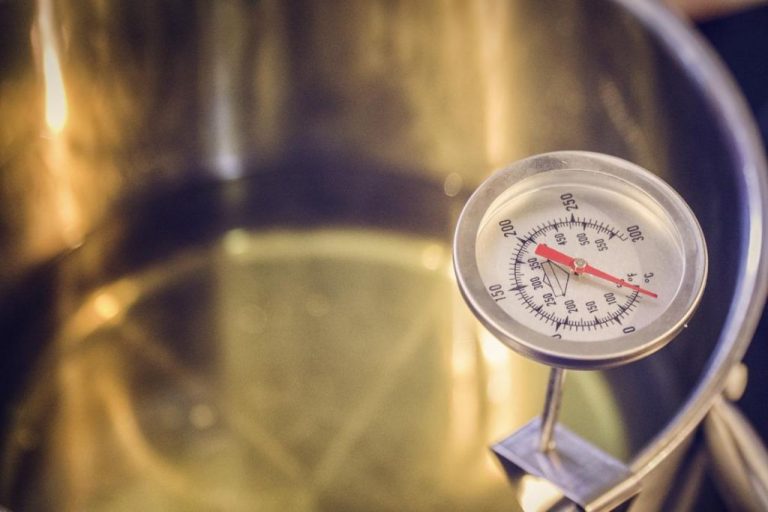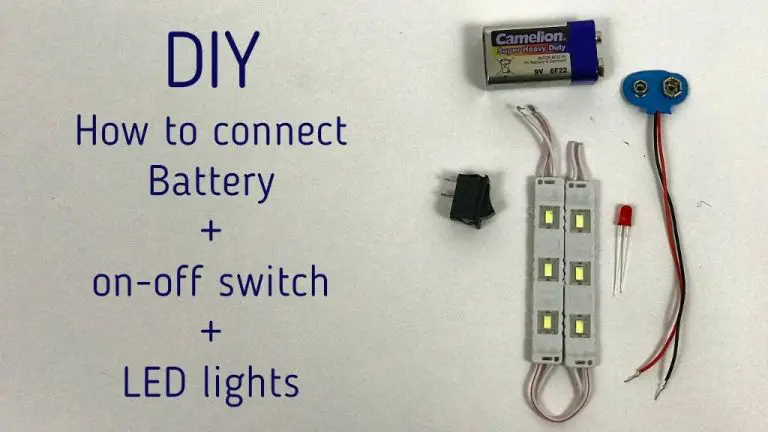Can You Super Glue A Broken Candle?
Repairing broken candles with super glue can be an effective and inexpensive solution. Candles can crack or break in a variety of ways – from the wick being detached, to wax breaking off, to the whole container cracking. With some preparation, the right glue, and careful technique, these damages can often be repaired for a fraction of the cost of purchasing a new candle. This allows you to revive broken candles and continue enjoying their scent and ambiance.
In this guide, we will walk through the step-by-step process of assessing candle damage, choosing an appropriate super glue, repairing the wick, mending wax pieces, fixing containers, and reinforcing repairs. We will also cover important safety tips when handling broken candles and glue. With some patience and care, super glue offers a simple DIY method to salvage damaged candles.
Assessing the Damage
There are a few types of breaks that can happen to candles:
- The wick may become damaged, offset, or detached from the wax.
- The wax itself may develop cracks, divots, or holes from improper burning.
- The container or glass surrounding the candle could chip, crack, or shatter.
When a candle breaks, the first step is identifying where the damage has occurred. Examine the wick to see if it is still straight and properly connected to the wax pool. Look at the surface of the wax for any gaps, splits, or pits that may have formed from issues like tunneling. Check the edges and bottom of the glass holder for fractures or fragments.
Assessing all areas of possible damage allows you to pinpoint the exact problem spots. This will dictate the best repair approach. For wicks that have fallen over, glue can re-adhere them. For sunken or uneven wax, melted wax can fill gaps and smooth divots. Broken glass containers may need replacement or creative concealment along cracked edges. Proper assessment informs the right fix. See Repairing An Improperly Burning Candle – Charles Farris for more details on damage types.
Cleaning the Candle
Before repairing a broken candle, it’s important to thoroughly clean the candle pieces to remove any debris that could get in the way of the repair. First, pick up any large pieces of wax that may have broken off and discard them if they are too small to reuse. Use a paper towel to wipe off any dust or dirt on the candle and wick.
If there is any wax residue remaining on the candle, you can remove it by wiping with a paper towel dampened slightly with rubbing alcohol, being careful not to soak the wick [1]. The alcohol will help dissolve the wax. Avoid using water, as that could damage the wick. Wipe gently to avoid fraying the wick. Make sure to get into crevices and small spaces to remove any hidden debris.
For candle jars, remove all remaining wax pieces and thoroughly wash the jar with soap and water. Make sure no wax remains stuck to the bottom or sides. Allow the jar to dry completely before attempting repairs.
Once the candle surfaces and wick are clear of any dirt, residue, or debris, you can move on to gluing and repairing the broken pieces.
Choosing the Right Glue
When it comes to repairing a broken candle, cyanoacrylate glue (commonly known as super glue) is often the best choice. Cyanoacrylate glues cure quickly, bond well with wax, and create strong repairs. However, cyanoacrylate can be brittle when fully cured and doesn’t allow for repositioning once bonded.
Other options like epoxy or hot glue can also repair candles, but may not be as effective. Epoxy creates a durable bond, but takes much longer to cure. Hot glue sets up faster but doesn’t penetrate materials as well as cyanoacrylate. For small candle repairs, cyanoacrylate is typically the easiest and most effective option.
When selecting a cyanoacrylate glue for candle repair, look for one that bonds well with wax. Thin, fast-curing formulas work best for penetrating cracks and breaks. Be sure to choose a glue advertised as non-toxic and odorless once cured, as you don’t want any unpleasant fumes coming from a repaired candle when burning.
Gluing the Wick
If the wick has become detached from the bottom of the candle, you can reattach it using a high-temperature glue or adhesive. Some options for gluing the wick include:
![]()
– High heat silicone sealant – This type of silicone can withstand temperatures up to 500°F, making it a good choice for candle wicks. Apply a small dot of silicone to the end of the wick and press it back into place in the wax (Source: https://suffolkcandles.co.uk/blogs/candles/how-to-secure-a-wick-in-a-candle).
– Craft glue – Regular craft glues like tacky glue or strong white glue can work to reattach a wick. Avoid super glues as they can release toxic fumes when heated. Apply a small amount and hold the wick in place until the glue dries.
– High-temp adhesive – Look for adhesives made specifically for bonding materials exposed to high heat, like those used on fireplace bricks. Follow package directions for application and drying time.
No matter what adhesive you use, take care to apply just a small amount. Too much glue can lead to smoking or clogging issues when the candle is lit. Let the glue cure fully before attempting to light the repaired candle.
Mending Wax
Mending a broken candle made of wax can be tricky, as wax is prone to cracking and breaking apart. However, with the right adhesive, you can bond the wax pieces back together. According to https://gluesavior.com/how-to-glue-wax-together/ the best glue for gluing wax is a hot melt glue gun. The high temperature glue will melt the wax slightly and create a strong bond as it dries. You can also use superglue or epoxy for gluing wax, as these adhesives are designed for materials that can be slippery. Just make sure to roughen the surface a bit with sandpaper so the glue adheres properly. When gluing wax, apply pressure for 30-60 seconds and let it cure completely.
If the wax fully cracked in half, you may need extra reinforcement. According to https://www.justanswer.com/general/0dpiz-repair-wax-sculpture.html it helps to insert a piece of rigid wire, paperclip, or toothpick into the wax for stability as the glue dries. This will act like a splint and prevent future cracking. Take care not to use too much glue, as excess adhesive can drip and take away from the candle’s appearance. With some preparation and patience, you can successfully mend wax and restore a cherished candle.
Fixing the Container
If your candle container is made of glass, metal or ceramic and it has cracked or broken, you can often repair it using super glue. Cyanoacrylate-based super glues like Loctite Glass Glue or Gorilla Super Glue Gel are designed for gluing glass and can create very strong bonds on these types of surfaces.
Before gluing, thoroughly clean the broken edges of the container with isopropyl alcohol to remove any wax residue. Allow the pieces to dry completely. Then apply a small amount of super glue to one side and press the pieces together, holding for 30-60 seconds. Wipe away any excess glue. You may need to clamp or tape the pieces while the glue sets for several hours.
For a clear finished look, opt for a glass glue formula like Loctite Ultra Gel Control Super Glue. It dries transparent and is formulated not to leave behind white haze on glass surfaces. On metal and ceramic containers, an instant glue like Gorilla Super Glue Gel works very well to mend cracks and breaks.
Be patient and let the glue cure fully, up to 24 hours, before relighting the candle. The repaired container should be strong enough for reuse if you use an appropriate super glue and allow full curing time. But take care not to knock or drop the container to prevent re-breaking any glued seams.
Reinforcing Repairs
Once the candle has been repaired with glue, there are some additional steps you can take to reinforce the repairs and help prevent future damage. One option is to wrap tape around the repaired area to add strength and stability. Masking tape, packing tape, or even medical tape like first aid tape can work well for this. Wrap the tape snugly but not too tight. You can also try using clamps, clips, or rubber bands to gently hold the repair in place while the glue sets. Small clamps or foldback clips may work better than larger clamps for candles. Allow 24-48 hours for the glue to fully cure before removing any tape, clamps, or rubber bands.
For extra reinforcement, you can insert a piece of wicking into the glue along the repair. This helps bridge the gap and provide more structure. You may also want to avoid moving or jostling the candle too much while the glue cures. Finding a safe place to allow it to sit undisturbed for a couple days helps ensure a lasting repair. Periodically check on the candle in the hours and days after gluing to make sure the pieces remain securely bonded. If needed, you can reapply glue or wrap additional tape until satisfied with the repair. With proper care and reinforcement, your repaired candle can burn like new again.
Safety Tips
When using super glue, it’s important to take proper safety precautions. Super glue gives off fumes that can be harmful if inhaled in large quantities. Make sure the room is properly ventilated when gluing to allow fumes to dissipate. Open windows, use fans, or work outside if possible. Avoid leaning directly over the glue, and position your face away from the fumes. Take breaks from gluing to breathe fresh air. Some people recommend wearing a mask or respirator when using large amounts of super glue. according to some sources like this one [1]. Prolonged exposure to super glue fumes can cause dizziness, headaches, and irritation of the lungs, eyes, and skin. If you experience any symptoms, get to fresh air immediately. Work in a well-ventilated area and avoid breathing the fumes to prevent problems.
It’s also important to store super glue properly when not in use. Keep the cap tightly sealed and store it in a cool, dry place out of direct sunlight. Storing glue properly preserves its effectiveness and reduces the risk of toxic fumes building up inside the container. With a few simple precautions, super glue can be used safely for all your crafting and home repair needs.
[1] https://glueaid.com/category/super-glue/
Conclusion
To summarize, here are the key steps to repairing a broken candle with super glue:
With some patience and care, broken candles can often be salvaged using super glue. Just be sure to work in a well-ventilated area and avoid skin contact with glue. Proper repairs will help the candle burn safely and evenly. With a few simple steps, you can give a broken candle new life!



